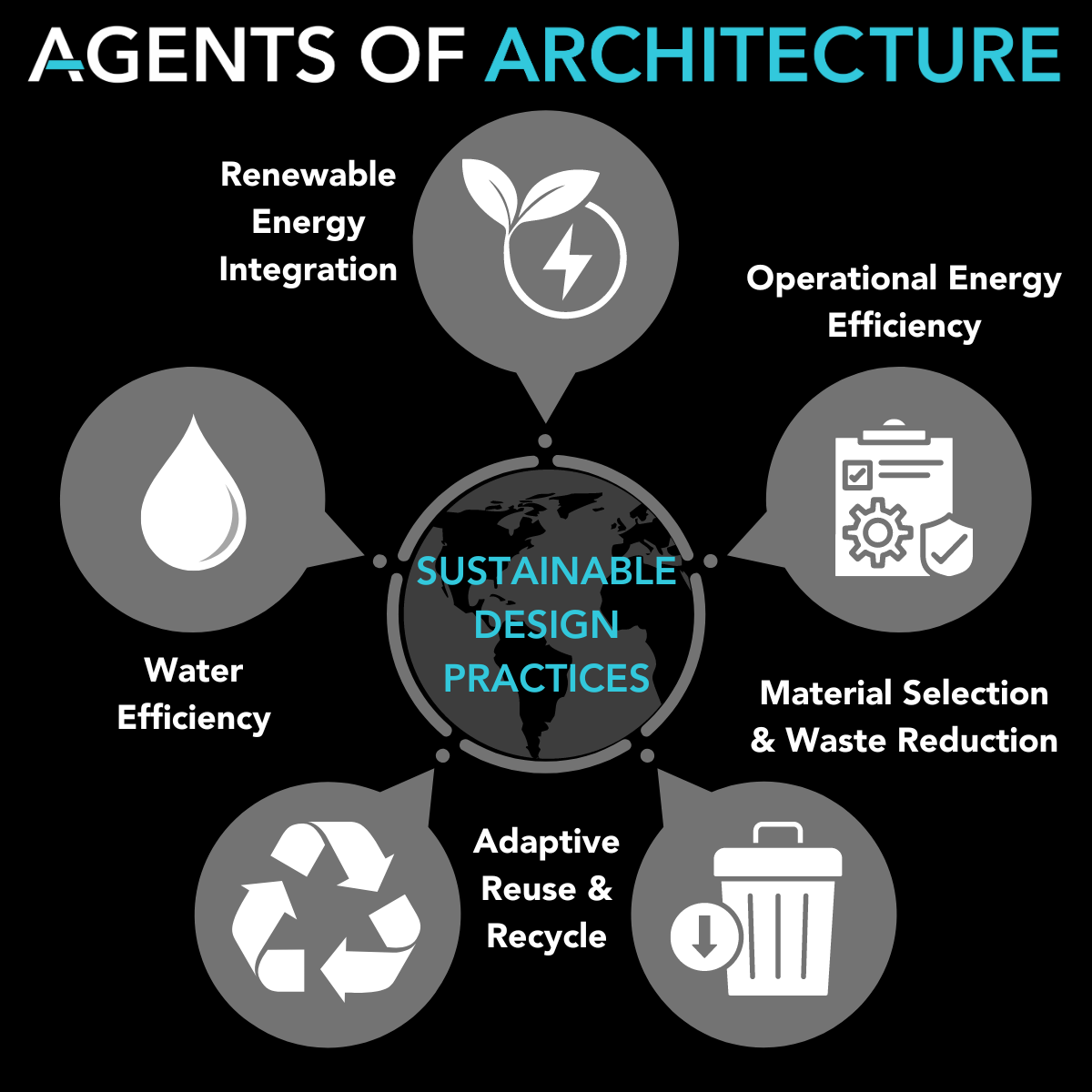Sustainable Design Practices
By integrating sustainable design practices, Agents of Architecture strive to make a positive difference to people and the environment through purposeful design. We are committed to designing low-carbon buildings that not only minimise environmental impact but also deliver tangible benefits to our clients and building occupants.
When discussing with clients, we recommend implementing these 5 key sustainable design practices:
1. Renewable Energy Integration: As New Zealand pushes toward more renewable energy sources and less reliance on fossil fuels, we encourage clients to also integrating renewable energy sources such as Solar Photovoltaics (PV) panels into the design. By harnessing natural resources, we reduce reliance on an already pressurised electricity grid, which leads to significant long-term cost savings for our clients while balancing the buildings’ emissions.
2. Operational Energy Efficiency: We prioritize energy efficiency measures to minimize operational carbon emissions and achieve long-term savings from reduced energy consumption and operational expenses. Implementing energy-efficient services such as LED lighting, high-efficiency HVAC and hot water systems, as well as smart building controls can significantly reduce utility bills over the lifespan of the building. Through careful planning, we design high performing buildings that make significant carbon emission reductions, while ensuring we enhance the quality of life for occupants and minimise the impact on the environment.
3. Material Selection and Waste Reduction: Our team focuses on sustainable material selection and waste reduction throughout the construction process. By choosing materials that have lower environmental impacts across their entire life cycle—from raw material extraction and manufacturing to transport, construction, maintenance, replacement, and end-of-life disposal—we minimize the need for costly repairs, replacements, and disposal processes down the line. We also optimise material usage reducing waste generation to lower material and disposal costs. By selecting sustainable materials and implementing waste management strategies, we minimize environmental impact while optimizing project budgets.
4. Adaptive Reuse and Recycle: We recognize the value of existing structures and strive to repurpose buildings and reuse high carbon elements whenever possible. By retaining and repurposing existing structures, we preserve the embodied energy of existing materials and avoid the need for extensive demolition and construction, which can be resource-intensive and environmentally damaging. Through reuse and recycling, we reduce construction waste and impacts on the environment while delivering cost-effective solutions to our clients.
5. Water Efficiency: We implement water-efficient fixtures, appliances, and systems to effectively promote significantly lower water usage in tapware, toilets, washing machines, and irrigation systems. As a result, building owners and occupants benefit from lower water bills over the lifespan of the building, leading to direct cost savings. With reduced water consumption, buildings will generate less wastewater discharge and reduce water treatment. Utilising rainwater harvesting further alleviates reliance on municipal water supplies, leading to long-term savings achieved through reduced water consumption and lower utility bills as well as mitigating the impact of stormwater runoff.
At Agents of Architecture, we believe that implementing sustainable design practices can be achieved on every project, whether you are aiming for a certification or not. Contact us today to learn more about how we can help you achieve your sustainability goals while delivering diverse tailored architectural solutions.

